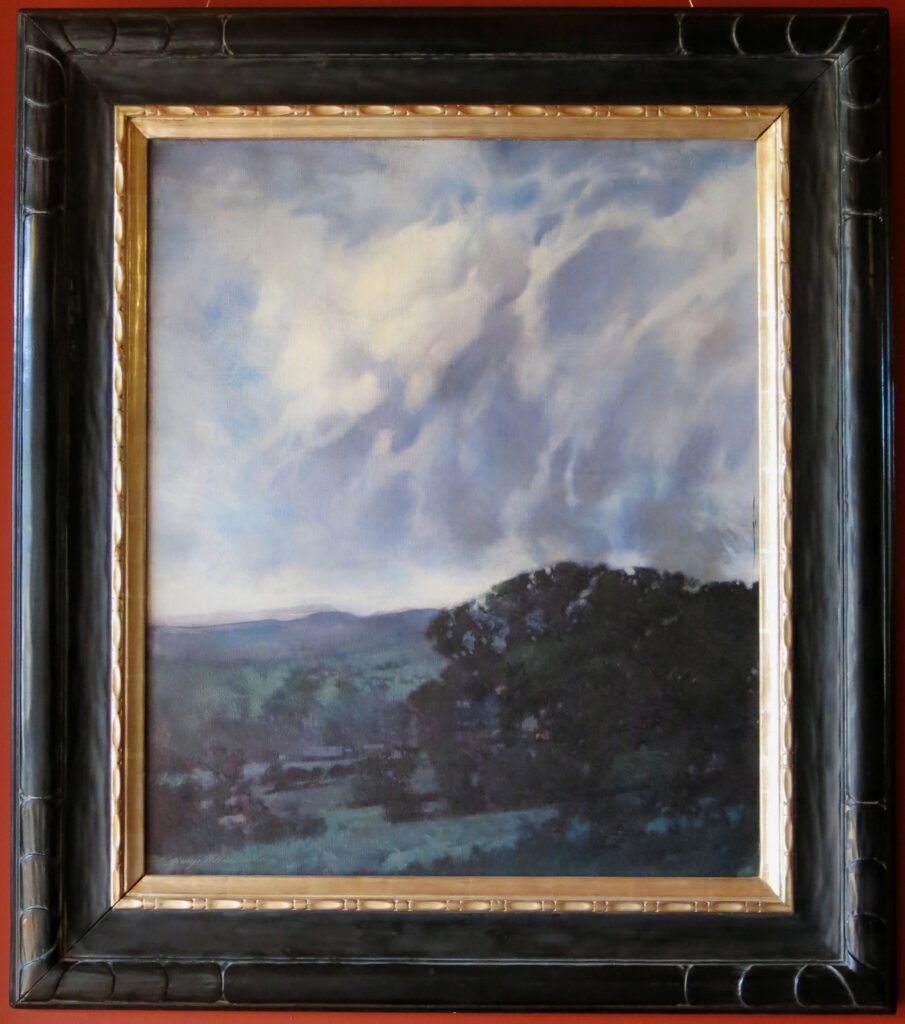 Eustis Estate
Eustis Estate
A Country Landscape
Charles H. Davis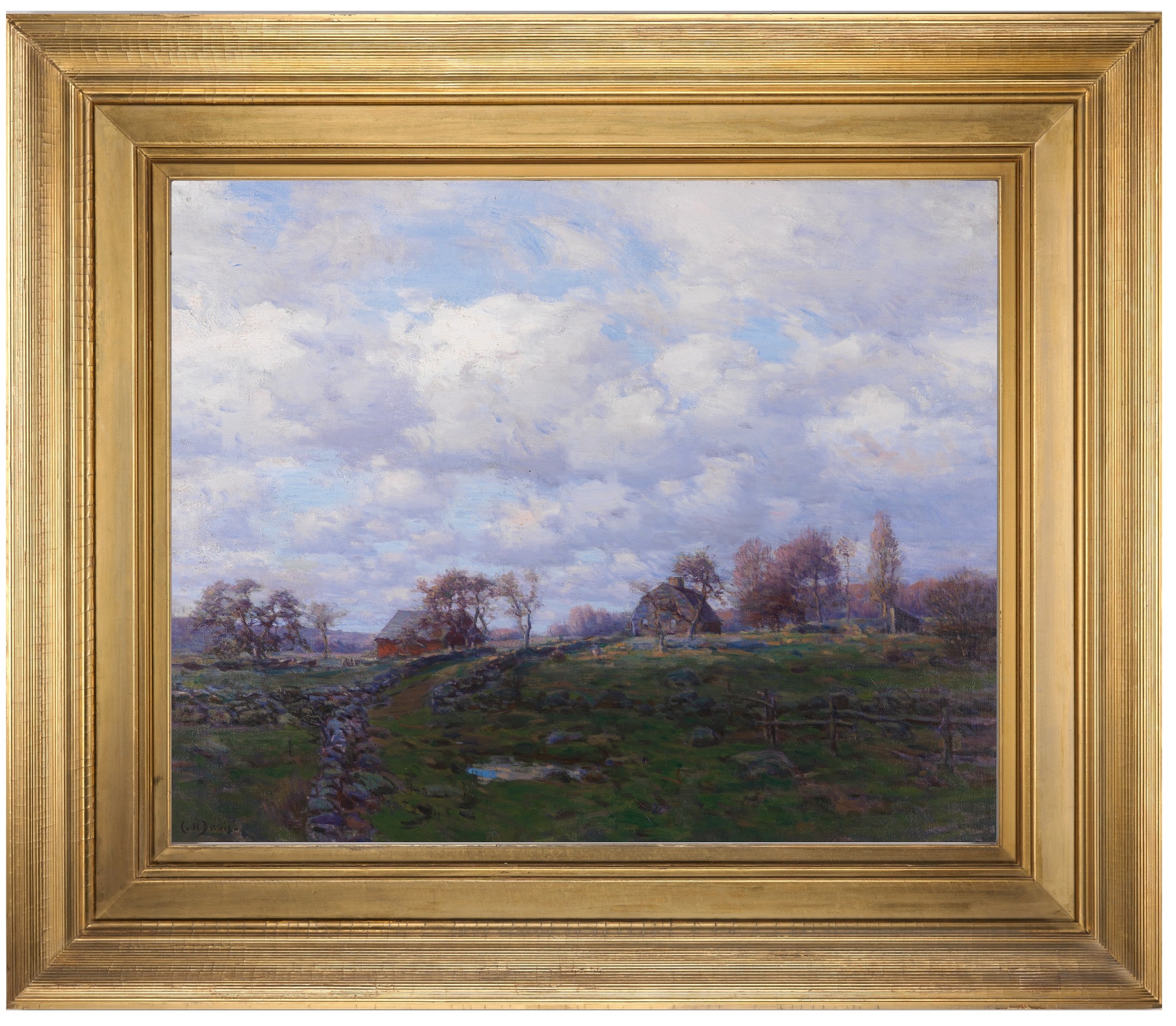

In the late 1910s, Charles H. Davis upset many people by abandoning his popular cloudscape paintings. His wife Frances Davis recalled: “He became the ‘Cloud Painter’ and ‘Davis Skies’ were demanded on all sides. The cloud pictures took prizes—were sold as soon as exhibited and the dealers were always asking for ‘more.’ Then Charles cried ‘halt’ and ceased to paint them except when the urge was so great that he could not resist…. The dealers rebelled, friends remonstrated, almost everyone misunderstood, but he knew he was right and no one, no argument, could move him…. When he felt prompted to paint a subject which would not sell, he never let that fact keep him from it.”
Charles H. Davis created “cloudscapes” in various tonalities to capture the variety of New England’s ever-shifting weather. Here are two further examples of his fascination with moving clouds.
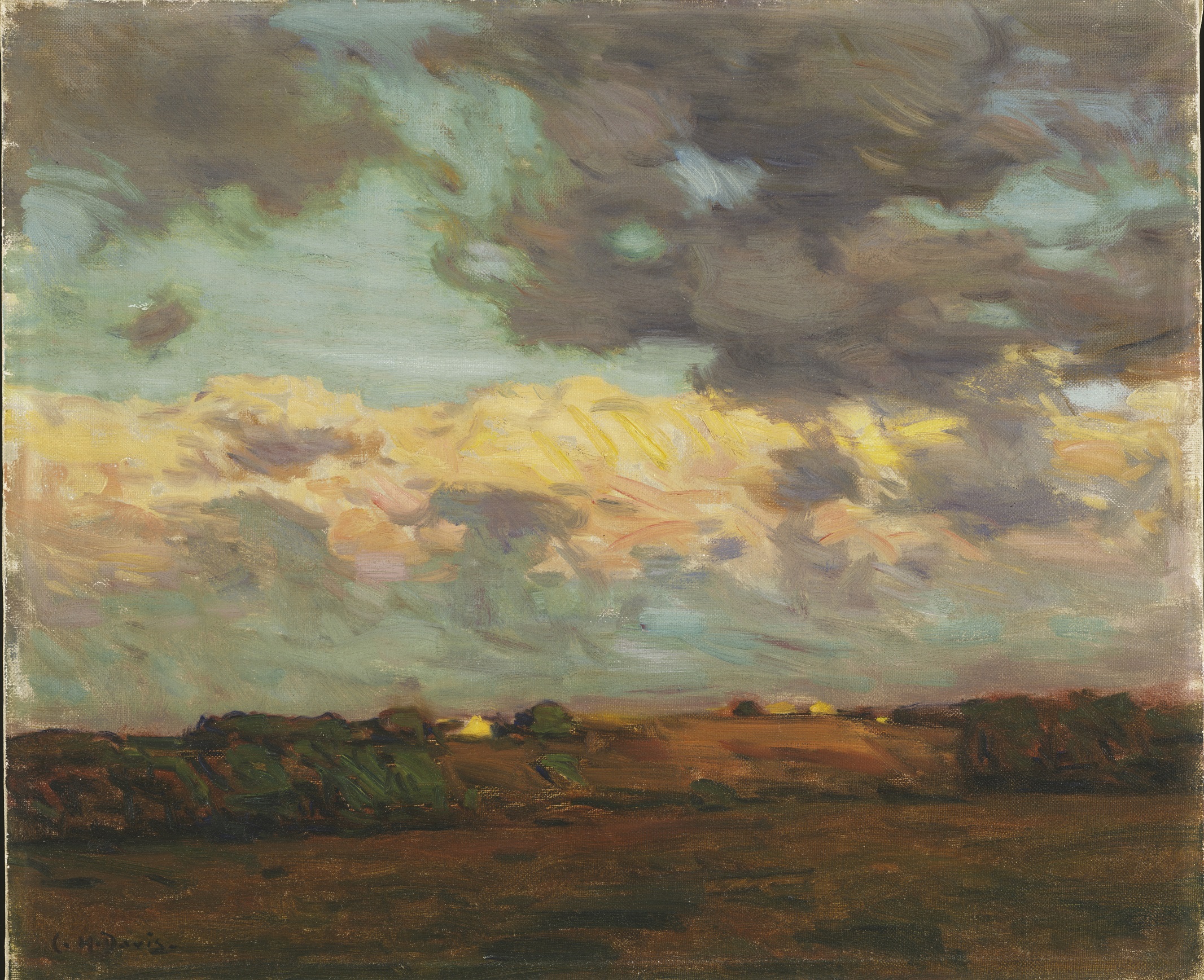
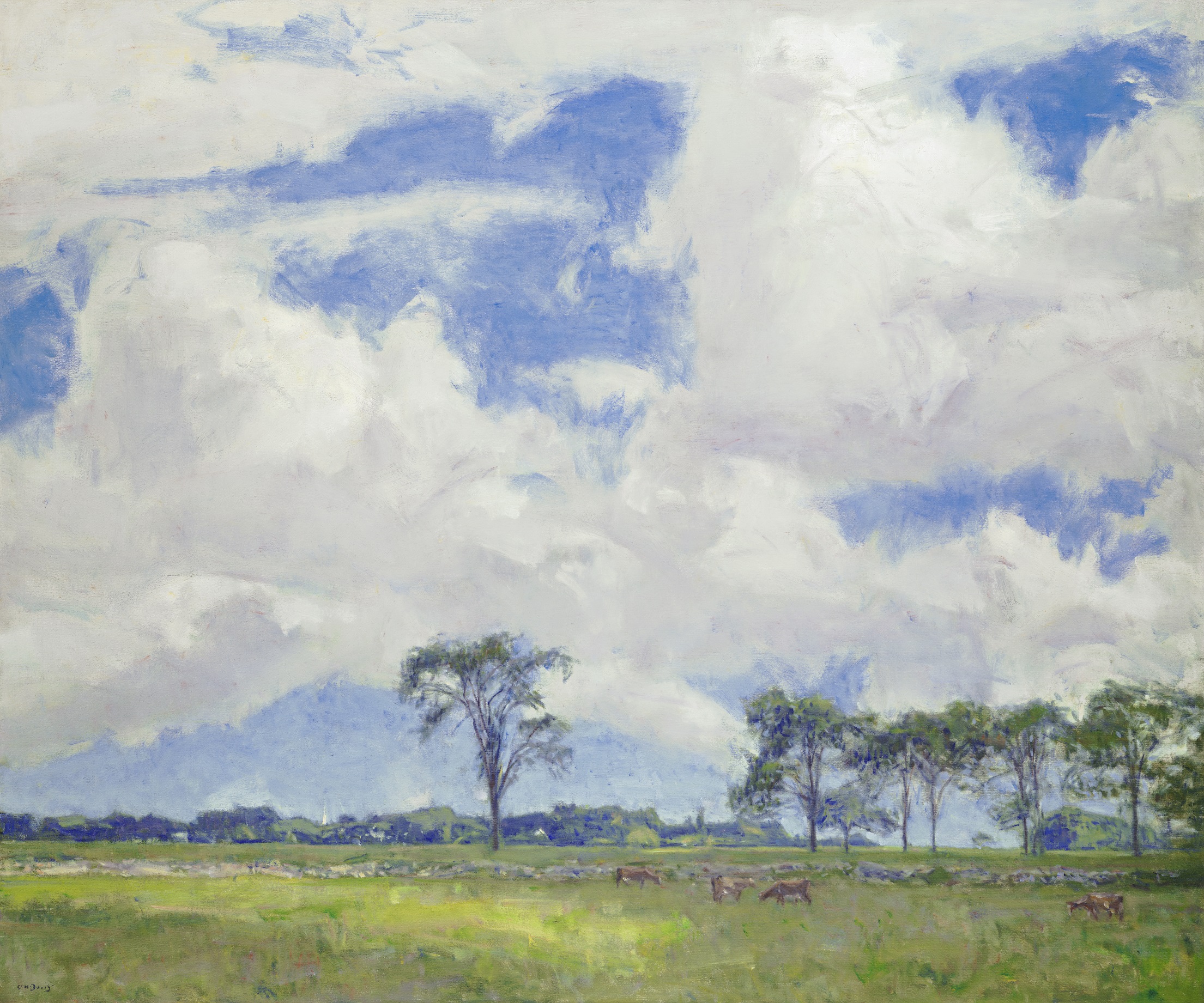
The French Barbizon paintings that Charles H. Davis first admired in Boston in 1874, when he was just eighteen, often featured cloud-flecked skies. A longtime practitioner and influential champion of the Barbizon aesthetic was the much older Boston artist William Morris Hunt, who painted this atmospheric scene of a coastal Massachusetts sky in 1877. In 1879, a memorial exhibition of Hunt’s art became the Museum of Fine Arts, Boston’s first “blockbuster.”
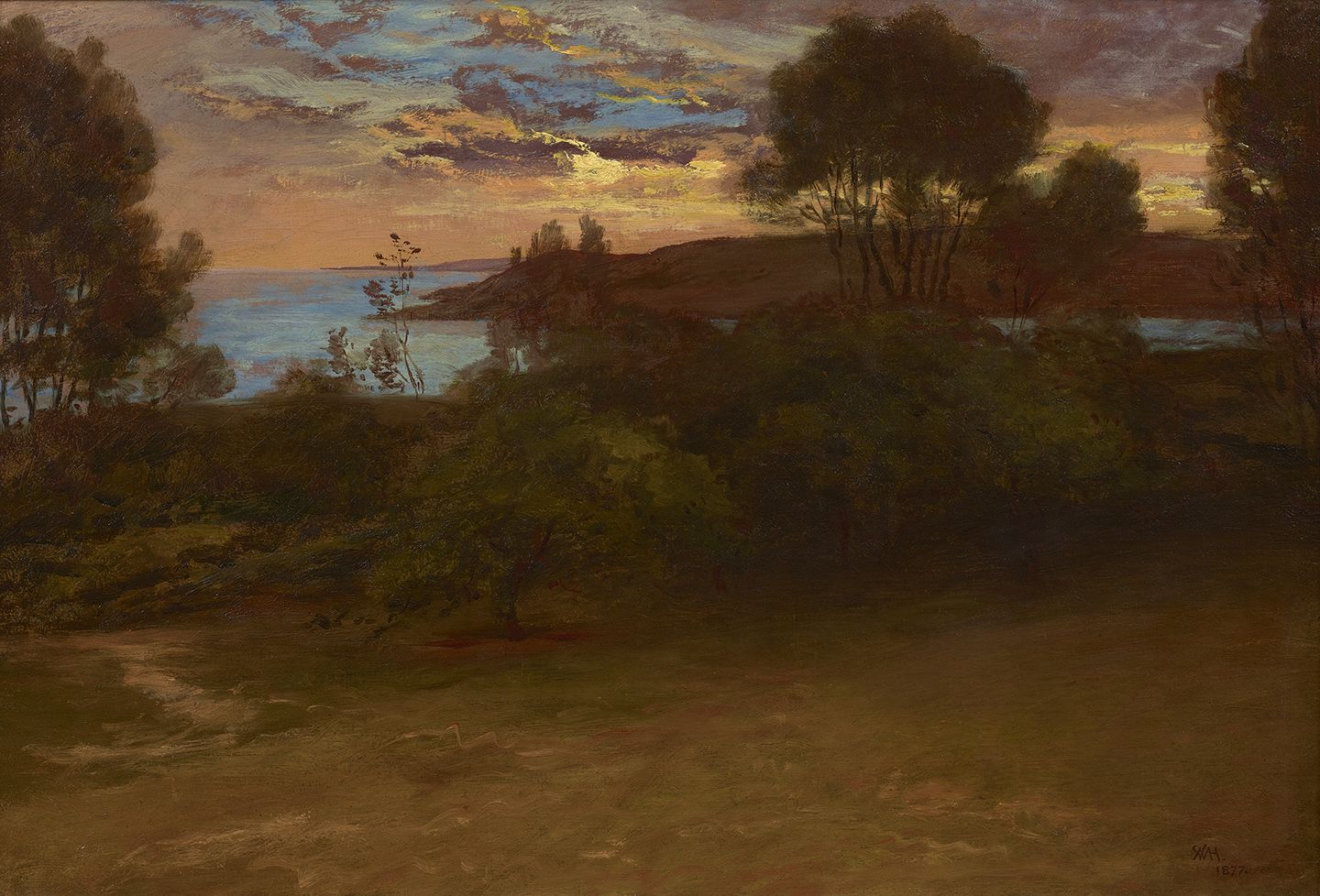
From the Conservator's Notebook
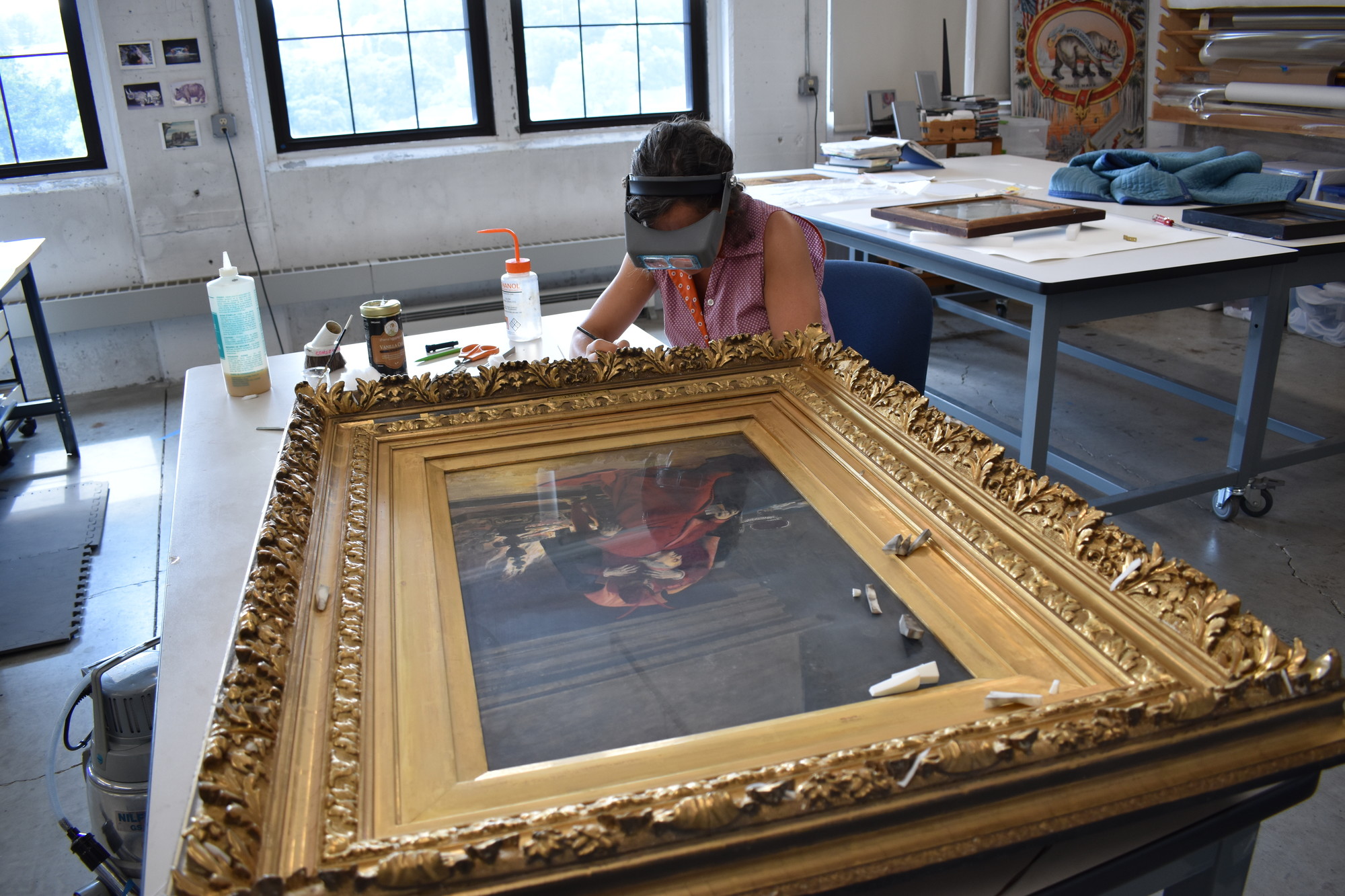
Historic New England objects conservator Michaela Neiro supervised the conservation treatment and stabilization of this exhibition’s paintings and frames over a period of two years. The Conservator’s Notebook features explanations and insights that Michaela has drawn from her project notebook, including close-up photographs showing how the work was done.
Though it is relatively plain, the elegant frame of A Country Landscape was actually one of the most difficult to conserve. Its basic elements are solid wood coated with a thin layer of gesso formed in a pattern of parallel reeding. The frame’s maker covered the gesso with gray bole (fine grained colored clay with rabbit skin glue), followed by oil gilding.
Scroll through the images below to see our process to conserve the frame.
Evaluating the Davis Frame
Due to changes in relative humidity over time, the underlying wood frame components expanded and contracted whereas the rigid and brittle gesso and gold layer did not. This explains all the parallel cracking, and ultimately, the lifting and loss of the thin layer of gesso. What we see here: Loss, bronze overpaint, old wax fills, dirt.
Painting in Context
Phillips HousePhillips House Dining Room
A Country Landscape usually hangs above the mantlepiece in the dining room of the Phillips House in Salem, Massachusetts.
With the aid of architect William Rantoul, the Phillips remodeled this room extensively in 1911–12. The Phillipses removed a staircase from this area and enlarged the room, adding the fireplace and the symmetrical china cabinets, all done in the Colonial Revival style. The cabinets display the finest pieces in the Phillips family’s extensive china collection.
In the image, the table is set for an ordinary dinner with close friends. To start dinner, Mr. Phillips gave a brief lecture on a topic of his choice, which would serve as the theme of the conversation throughout dinner.
Click the hot spots in the picture to learn more about objects in the room. For more about the Phillips House, see below.

Before A Country Landscape hung over the mantel in the Phillips House, it was in the Commonwealth Avenue home in Boston of the art collector Anna Perkins Pingree Peabody. Unlike most wealthy Bostonians, Anna Peabody collected the work of contemporary painters including Davis, Hermann Dudley Murphy, and George Harvey. Upon her death, Peabody’s niece Anna Phillips inherited the paintings along with the money that enabled her to purchase the house at 34 Chestnut Street in Salem and fund its subsequent Colonial Revival renovation.
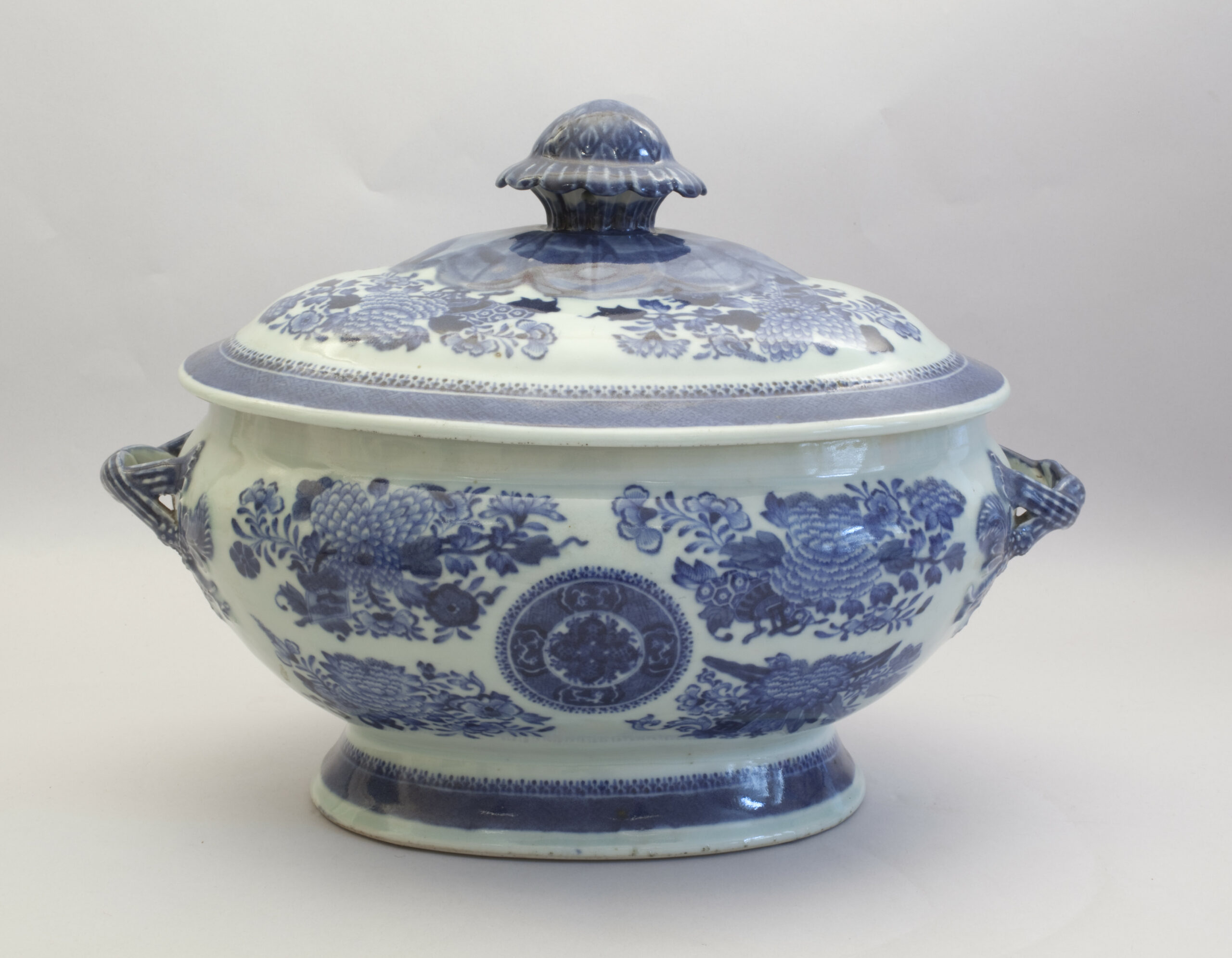
Fitzhugh and Canton Porcelain Settings, c. 1800-1850
Captain Stephen Phillips was one in a long line of sea captains who returned with Chinese Export porcelain, part of Salem’s famous China Trade. These settings were used by the Phillips family in the 20th century as their everyday breakfast, luncheon, and tea service settings.
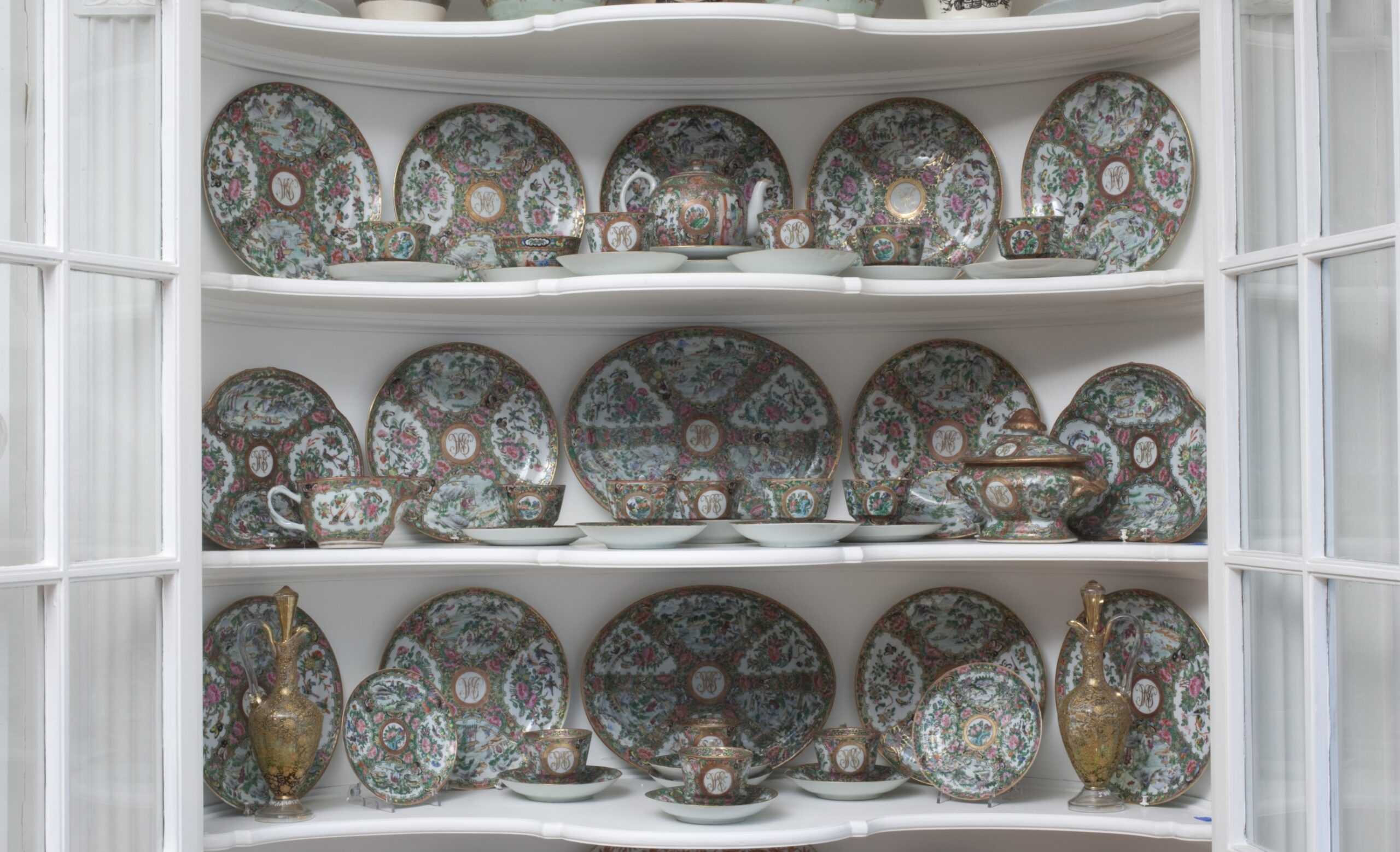
Canton Rose Medallion China, c. 1870
This Famille Rose dinnerware is green Canton china with a rose peony pattern and landscape views. In the medallion are the initials “S.G.W.” in gold. The monogram stands for Stephen Goodhue Wheatland, Mrs. Phillips’ father. This was the china used by the Phillips family for the most special occasions.
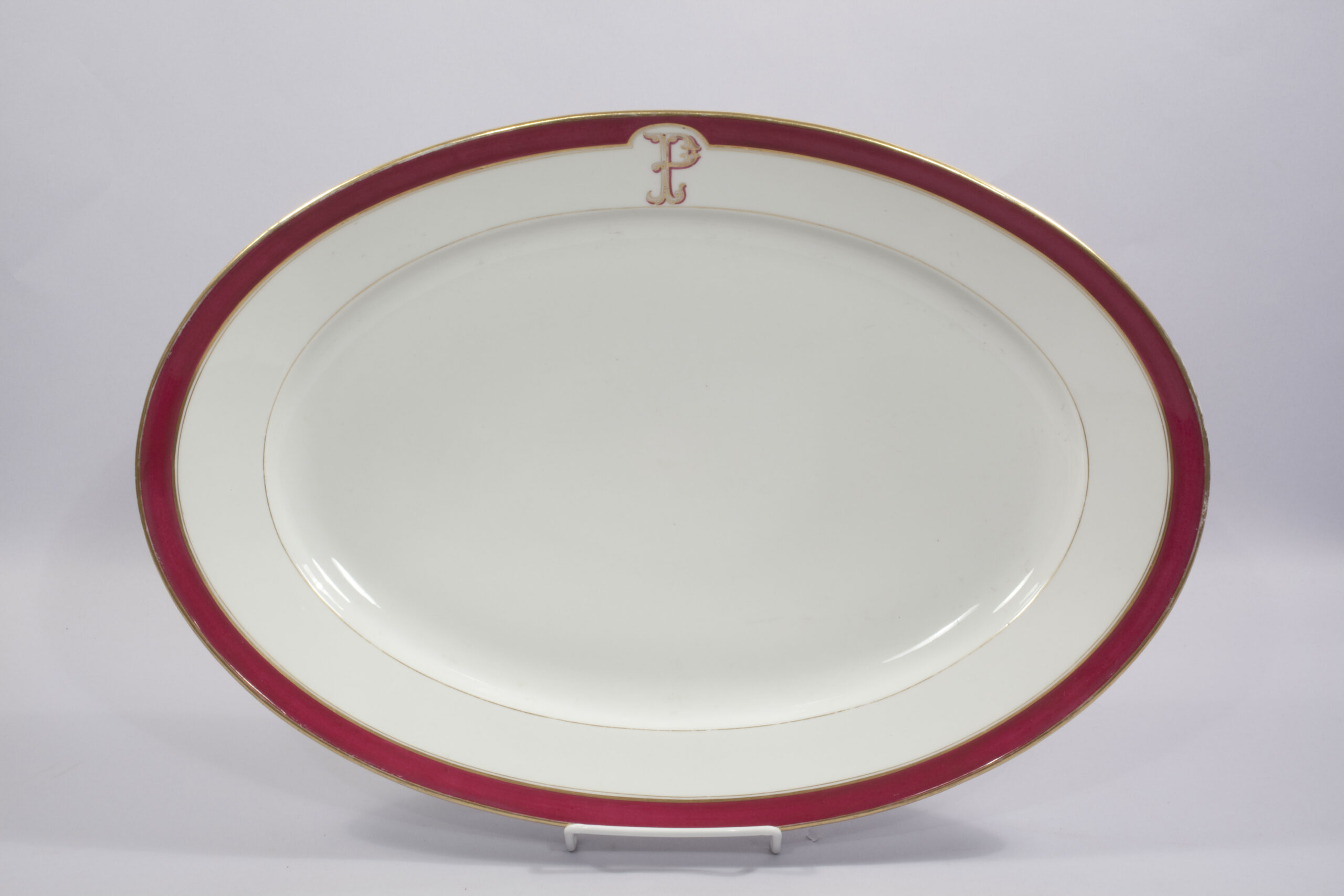
French porcelain dinner service, 1867
This set was purchased for Anna Pingree Wheatland Phillips and Stephen Willard Phillips on the occasion of their wedding in 1899. It was used as their “everyday” china. The Pillivuyt Company won the Medaille D’Or (Gold Medal) at the Paris World Exposition in 1867.
to learn more
Phillips House
Salem, Massachusetts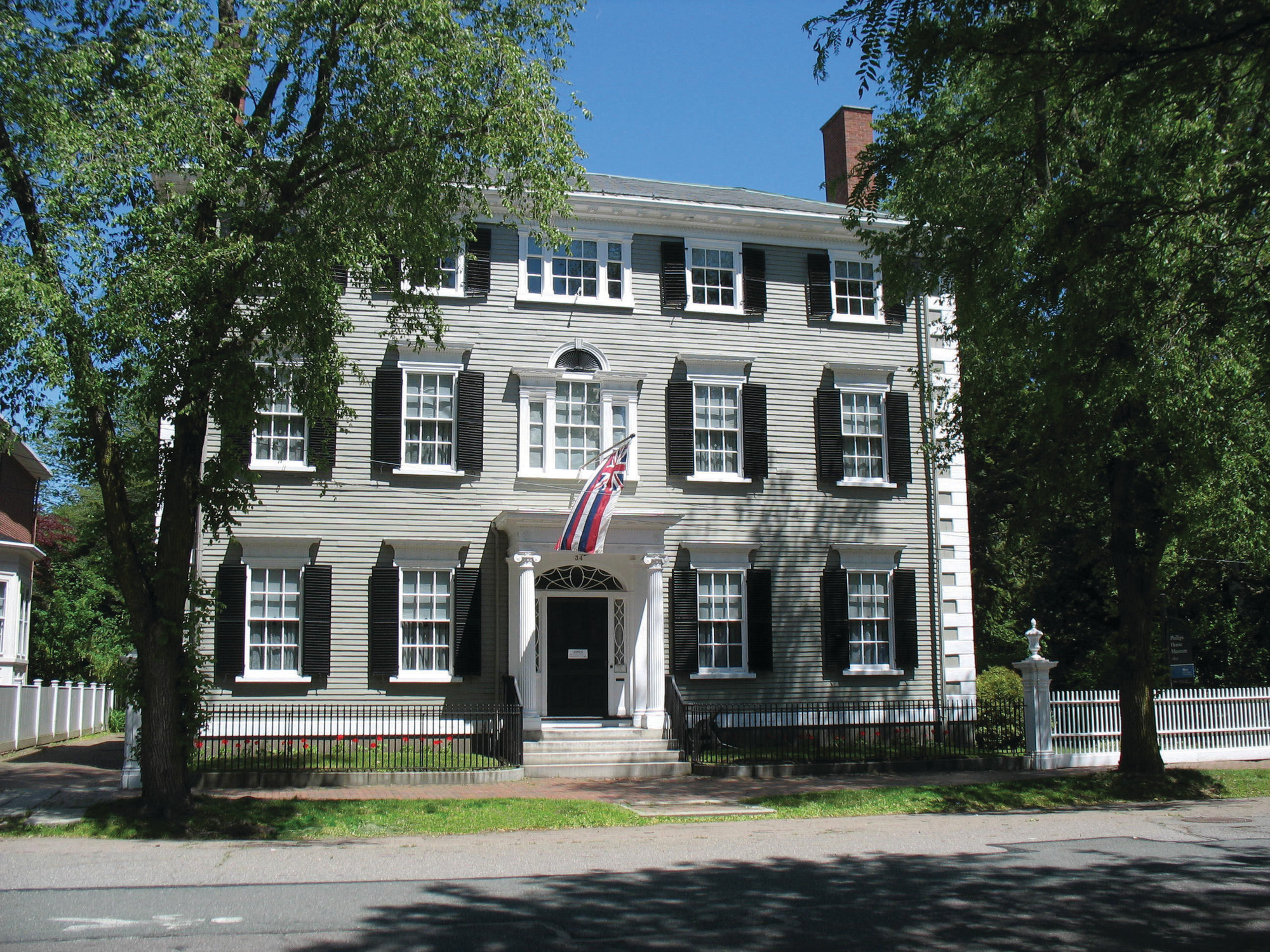 In 1821 four intact rooms from an earlier house were transported by ox sled to Salem’s fashionable Chestnut Street to form the core of a new Federal-style mansion being built by Captain Nathaniel West. Nearly a century later, Anna Phillips bought the house and launched a fourteen-month renovation in the Colonial Revival style. Today Phillips House is the only mansion open to the public on Chestnut Street.
In 1821 four intact rooms from an earlier house were transported by ox sled to Salem’s fashionable Chestnut Street to form the core of a new Federal-style mansion being built by Captain Nathaniel West. Nearly a century later, Anna Phillips bought the house and launched a fourteen-month renovation in the Colonial Revival style. Today Phillips House is the only mansion open to the public on Chestnut Street.
When Anna Phillips, her husband Stephen Willard Phillips, and their five-year-old son moved in, they brought with them a family collection that spans five generations and blossomed during Salem’s Great Age of Sail. Enjoy a glimpse into the private world of the Phillips family and their staff during the early decades of the twentieth century. The kitchen, pantry, and a domestic staff bedroom present a rarely seen picture of how great houses functioned as new technologies were being introduced.
The Phillips House is located at 34 Chestnut Street, Salem, Massachusetts 01970. For more information and an operating schedule click here for the website.
Paintings from the Eustis Estate
ComparisonsThe dynamic cloud formations that Davis relished are also seen in the painting The Valley Below by a younger artist, George H. Hallowell, displayed on the ground floor of Eustis Estate in the Living Hall. Notice how each man devoted more than half of his composition to an atmospheric sky. Born in Boston, Hallowell spent three years at the School of the Museum of Fine Arts, Boston, where Davis had studied earlier.
Learn more about Hallowell’s painting in the section below.
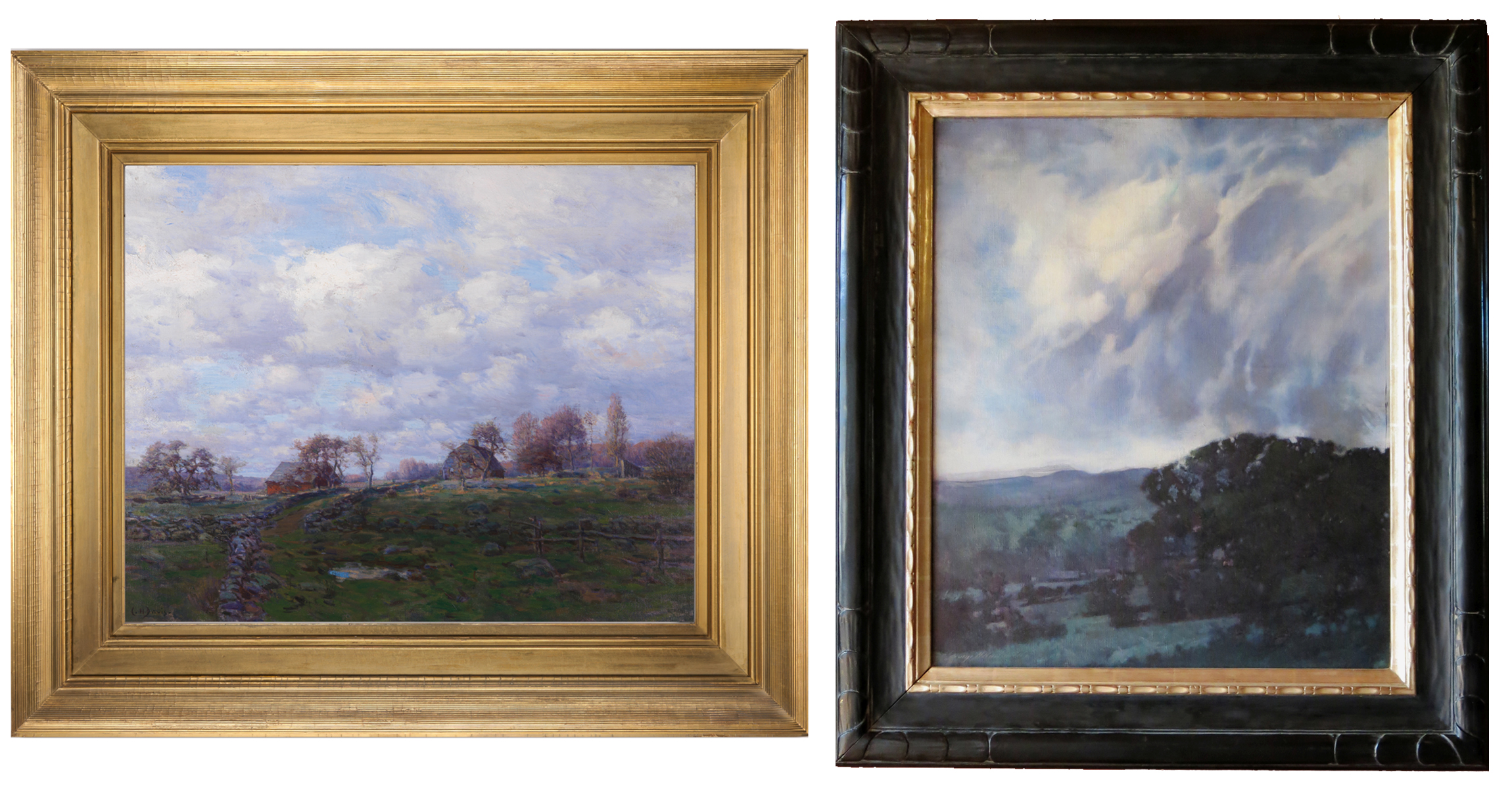
Right: George H. Hallowell (1872–1926), The Valley Below, c. 1905, oil on canvas, 40 1/2 x 35 ½ in., Museum Purchase, 2017.10.1.
The Valley Below
The distinguished architect Ralph Adams Cram wrote glowingly of artist George H. Hallowell (1871–1926): “His feeling for colour, tone and colour composition, was unique and distinguished.” Cram gave Hallowell his first real break when he commissioned the young artist to paint the altarpiece for All Saints’ Church, in nearby Ashmont (where it can still be seen today). Cram was not Hallowell’s only admirer. John Singer Sargent, who owned eight paintings by Hallowell, considered him “the painter with the greatest power and promise in America.” The Valley Below, completed around 1905, reflects Hallowell’s lifelong interest in the landscape of northern New England. Its style is forward-looking, its purple moodiness typical of Hallowell’s work.
